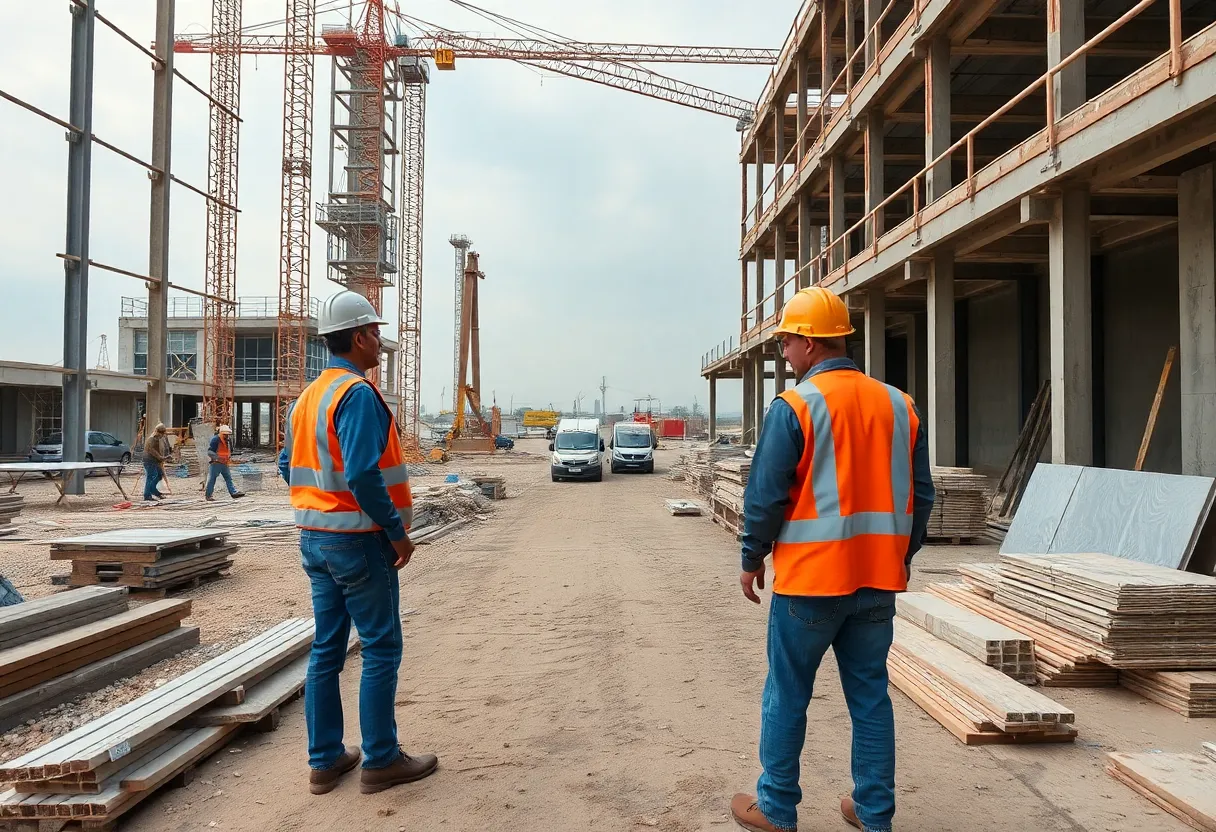News Summary
Small construction firms are grappling with labor shortages and increasing material costs that are hindering project pipelines. With revenues under $30 million, these contractors are feeling the effects more acutely than larger companies. Analysts report a decline in project backlogs, particularly in the commercial sector, alongside a significant percentage of firms struggling to find qualified workers. In response, industry leaders are advocating for reforms in immigration policies and improved workforce development to address the ongoing crisis and retain talent within the sector.
Labor Shortages and Rising Material Costs Pressure Small Construction Firms
Washington D.C. – Small construction firms are facing mounting challenges as labor shortages and increasing material costs hinder their project pipelines. Contractors with annual revenues under $30 million are particularly vulnerable, reflecting a significant divide in the construction industry as larger companies, those exceeding $100 million in annual revenue, continue to expand their operations.
Data revealed that in August, the backlog of projects for smaller firms saw a decline, which analysts attribute to ongoing decreases in spending on nonresidential construction. While the backlog for heavy industry and infrastructure projects remained stable, the commercial and institutional sectors experienced a worrying reduction, dropping to an average of 8.3 months. This indicates that smaller firms are feeling the brunt of economic pressures more keenly than their larger counterparts.
Impact of Material Costs and Labor Shortages
Small contractors are grappling with significant challenges related to rising material costs and a tightening labor market. Factors contributing to the downturn include not only increases in material prices but also policy uncertainties and a resurgence in labor shortages. Reports show that about 25% of contractors have encountered delays or project cancellations driven by tariffs, which further complicate the cost structure of construction projects.
Despite a stable confidence level among contractors, the uncertainty surrounding economic conditions continues to make projections difficult. Labor shortages are particularly troubling, with 92% of construction firms struggling to find qualified workers, leading to project delays. A notable 78% of these firms reported experiencing delays over the past year, with total economic losses attributed to project inefficiencies due to labor shortages estimated at approximately $10.8 billion annually.
Industry Responses and Workforce Development Efforts
The Elevate 2025 conference recently underscored a national workforce crisis in the construction sector, which industry leaders have labeled as a national security threat. Proposals for addressing these challenges include reforming immigration policies and actively recruiting veterans and women into the industry. The Labor Secretary has highlighted a call for an accessible immigration system that supports companies dependent on foreign workers for project completion.
Moreover, the construction industry is seeing a high turnover rate among veterans, with many leaving their first civilian jobs within a year, pointing toward the necessity for collaborative retention strategies across the sector. Alarmingly, only 10% of construction firms are currently exploiting temporary work visa programs available for foreign workers, despite the evident labor crunch.
Long-term Solutions Needed
The Associated General Contractors of America (AGC) has reported that nearly half of construction firms identified poor leadership as a significant factor driving women out of the industry, stressing the urgent need for mentorship and career development support to retain female talent. In response to the escalating labor shortages, the construction industry is making concerted efforts to develop its workforce and adopt advanced technologies that streamline operations and improve productivity.
By the end of July, the number of open construction jobs had risen by 26%, reaching the highest level in more than a year. Moreover, the AGC emphasizes the need for expanded funding for vocational education programs designed to address the long-term workforce requirements in the construction industry.
As the sector confronts the dual pressures of labor shortages and increasing material costs, it is evident that strategic changes at the policy level and within individual firms will be crucial to ensure the sustainable growth and competitiveness of both small and large construction enterprises in the coming years.
Deeper Dive: News & Info About This Topic
HERE Resources
Community Concerns Rise Over Proposed Data Centers in Indianapolis
Indianapolis Hosts TireRack.com Battle on the Bricks
South Lyon Schools to Resume Classes After Cybersecurity Incident
Burns & McDonnell Opens New Construction Academy in Pearland
New Crosswalks Planned for Pedestrian Safety on 82nd Avenue
Indiana Launches New Economic Development Initiative
Burlington Businesses Struggle Amidst Downtown Construction
Successful Fishing and Conservation Efforts in Adirondacks
Indiana Validates READI Regions for Economic Development
USDA Allocates $18 Million for Farm to School Program
Additional Resources
- Construction Dive: Labor Crisis as National Security Issue
- Scotsman Guide: Labor Shortages and Immigration Crackdowns
- AZoBuild: Article on Construction
- Wikipedia: Construction Industry
- Axios: Trump and Immigration Impact on Construction
- Google Search: Construction Labor Shortage
Author: STAFF HERE INDIANAPOLIS WRITER
The INDIANAPOLIS STAFF WRITER represents the experienced team at HEREIndianapolis.com, your go-to source for actionable local news and information in Indianapolis, Marion County, and beyond. Specializing in "news you can use," we cover essential topics like product reviews for personal and business needs, local business directories, politics, real estate trends, neighborhood insights, and state news affecting the area—with deep expertise drawn from years of dedicated reporting and strong community input, including local press releases and business updates. We deliver top reporting on high-value events such as the Indianapolis 500, Indy Jazz Fest, and the Indiana State Fair. Our coverage extends to key organizations like the Indy Chamber and Visit Indy, plus leading businesses in motorsports and healthcare that power the local economy such as Indianapolis Motor Speedway and IU Health. As part of the broader HERE network, we provide comprehensive, credible insights into Indiana's dynamic landscape.





